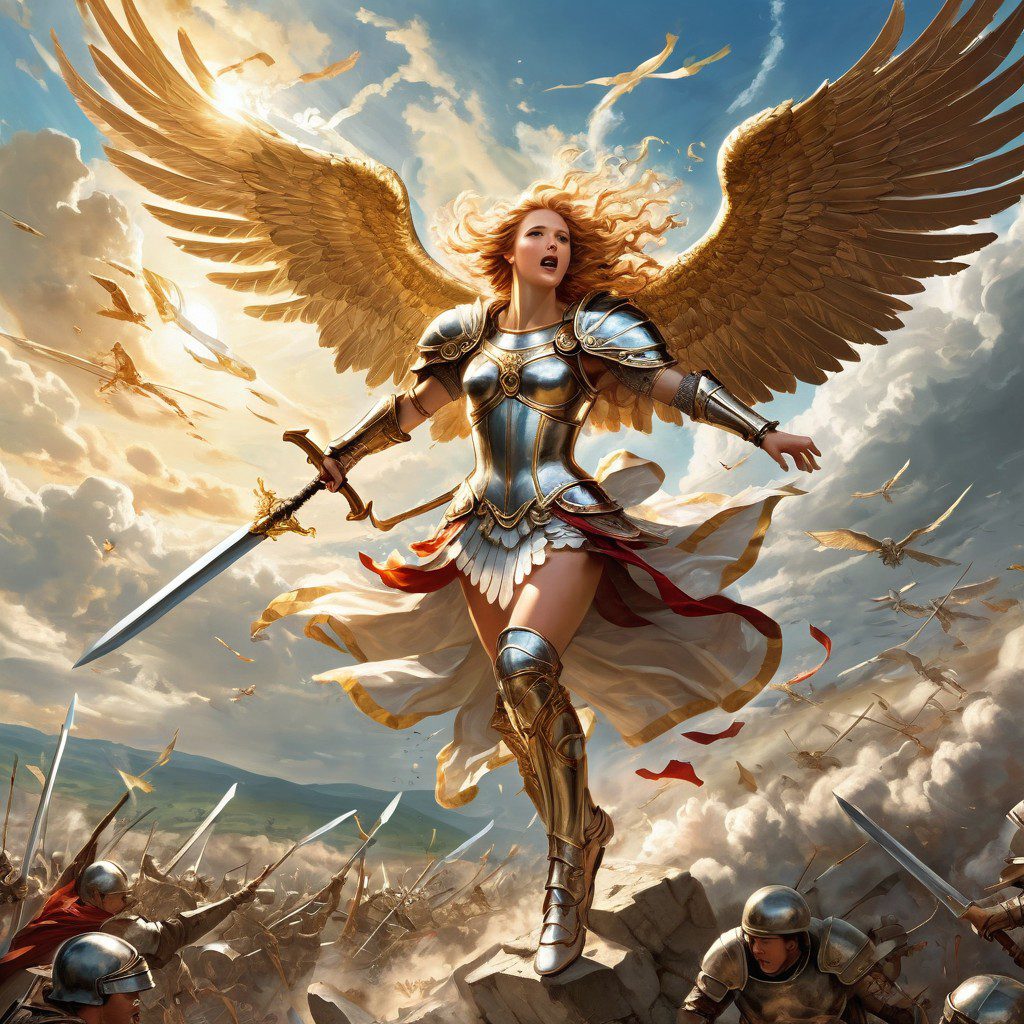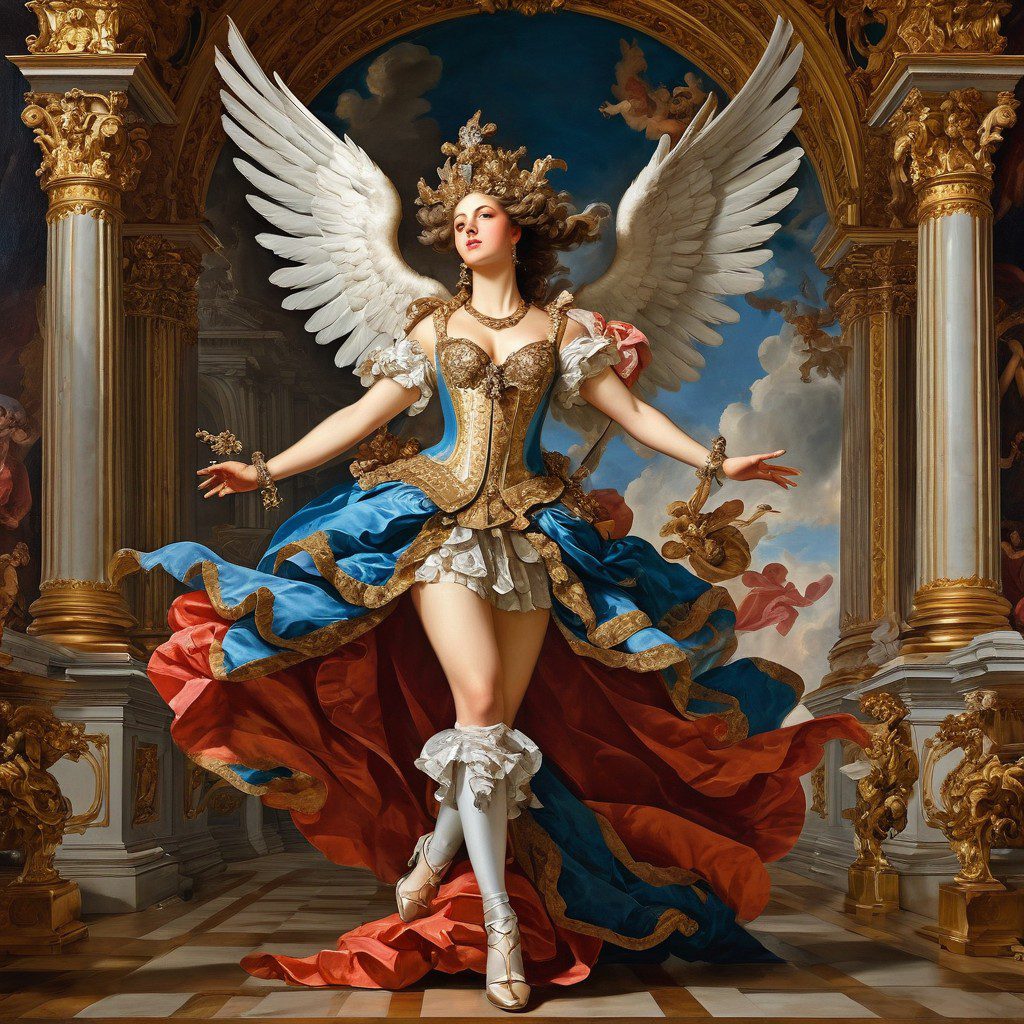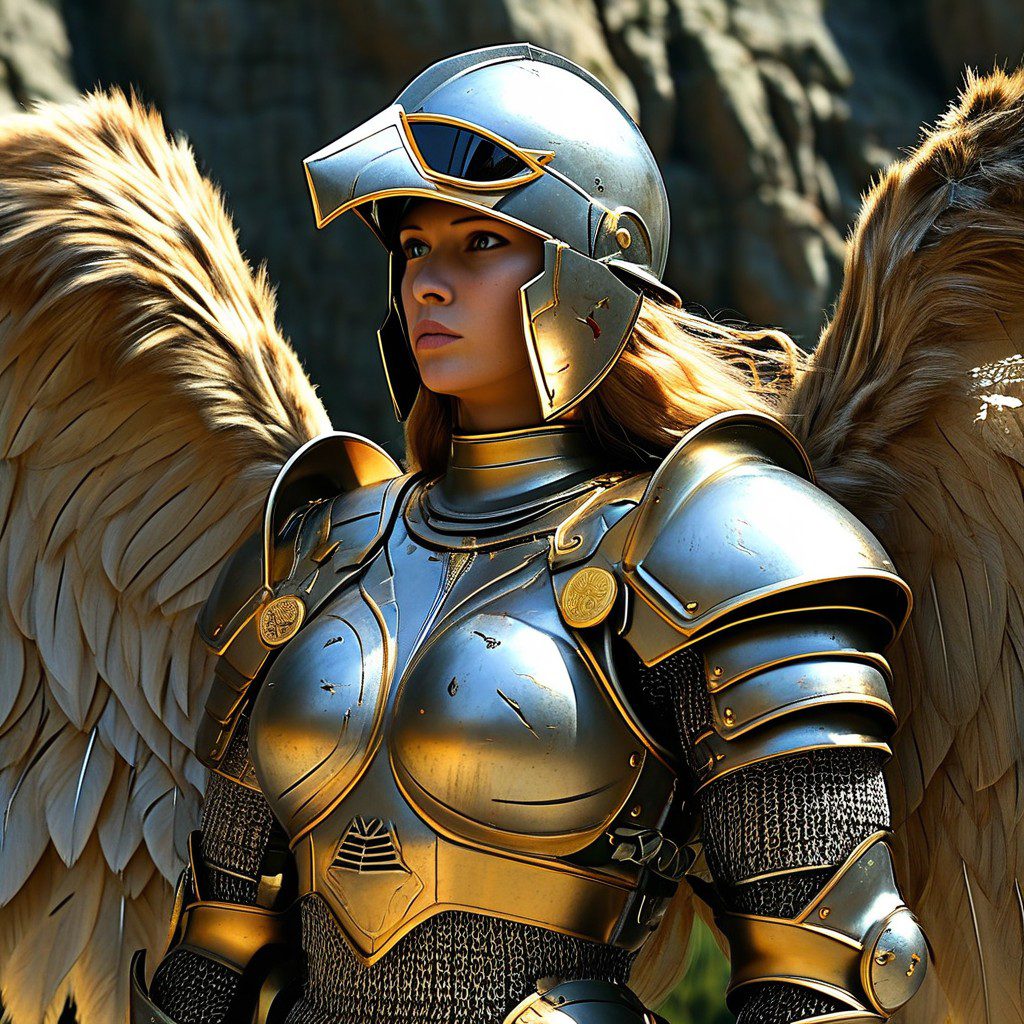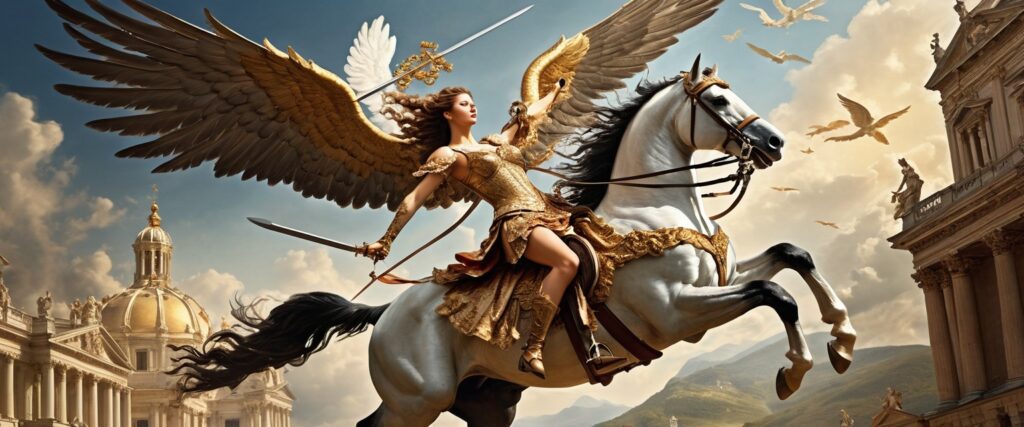Valkyries: The Choosers of the Slain in Norse Mythology

Valkyries, the powerful and enigmatic warrior maidens from Norse mythology, are among the most iconic figures in Viking lore. These shield-maidens of Odin played a critical role in determining the fate of warriors on the battlefield, selecting those worthy of Valhalla, where the chosen dead would prepare for the final battle of Ragnarok. The Valkyries embody both the beauty and brutality of war, representing a fusion of divine authority and mortal courage. Over time, they have become enduring symbols of strength, valor, and destiny, appearing in a wide array of modern literature, film, and games.
Origins and Mythological Role
The word Valkyrie comes from the Old Norse term valkyrja, which translates to “chooser of the slain.” In Viking belief, the Valkyries were sent by Odin to collect the souls of those who fell in battle. These fallen warriors, known as the Einherjar, were taken to Valhalla, Odin’s great hall in Asgard, where they would train and fight daily, preparing for Ragnarok—the end of the world, when they would rise again to fight alongside the gods.
The Valkyries themselves are often described as both beautiful and terrifying, embodying the dual nature of battle as both glorious and deadly. They ride swift horses through the sky, sometimes even flying, and are often depicted carrying spears and wearing armor. As they hover over the battlefield, they decide who will live and who will die. In some tales, they are even seen directly intervening in combat, influencing the outcome of wars and battles at Odin’s command.
The Valkyries in Norse Texts


The Valkyries appear in several key sources of Norse mythology, including the Poetic Edda and the Prose Edda, two primary collections of Norse mythological poetry and prose. They also feature prominently in skaldic poetry, which often glorifies the heroic nature of battle and the Valkyries’ role in it.
In the Poetic Edda, one of the most famous mentions of Valkyries is in the poem “Hákonarmál”, where they are described as guiding the fallen King Hákon to Valhalla after a fierce battle. The Valkyries’ role as both guides and warriors is emphasized in their ability to shepherd worthy souls to the afterlife. Another important tale comes from the Völuspá, where the Valkyries are listed among the forces preparing for the coming of Ragnarok, showing their connection not only to battle but to the end of all things.
The Prose Edda, written by Snorri Sturluson, elaborates on their duties in Valhalla. Here, Valkyries are not just battle maidens but also caretakers of the slain warriors. They serve mead to the Einherjar as they feast and train, further linking the Valkyries to the rituals of death, valor, and celebration in the afterlife.
Notable Valkyries in Myth

While many Valkyries are nameless or known only through poetic references, several stand out in myth for their individual roles and characteristics.
- Brynhildr (Brunhilde): Perhaps the most famous Valkyrie, Brynhildr is a key figure in the Volsunga Saga and the inspiration for Richard Wagner’s Ring Cycle. In her story, Brynhildr disobeys Odin, who punishes her by putting her into a deep sleep, surrounded by a ring of fire, until she is awakened by the hero Sigurd. Their tragic love story, marked by betrayal and revenge, underscores the deep connection between Valkyries and the themes of fate, honor, and death.
- Hildr: In some versions of the mythology, Hildr is a Valkyrie who has the power to revive the dead, perpetuating eternal battles. She represents the endless cycle of warfare that was often glorified in Viking culture, where fallen warriors would fight again and again in preparation for Ragnarok.
- Skögul and Gunnr: Two other notable Valkyries mentioned in the Prose Edda, Skögul and Gunnr are often portrayed as fierce warriors. They ride into battle alongside Odin and are among the most aggressive of the Valkyries, reflecting their integral role in deciding the outcome of conflicts.
Symbolism of the Valkyries
The Valkyries symbolize many aspects of Norse culture and worldview, especially regarding death, battle, and fate. As divine beings, they act as Odin’s agents, reinforcing the idea that the gods have a direct hand in human affairs, particularly in matters of life and death.
War and Honor: Valkyries represent the Viking ideal of a glorious death in battle. In Norse belief, to die in combat was the greatest honor a warrior could achieve, and the Valkyries ensured that those who fought bravely would be rewarded. The selection of warriors for Valhalla wasn’t random but was based on merit and valor. The Valkyries thus embodied the principle that courage in the face of death was the highest virtue.
Fate and Destiny: Valkyries also represent the concept of fate. In Norse mythology, fate (or wyrd) is an inescapable force, even for the gods. The Valkyries’ choices on the battlefield are not arbitrary; they are acting out the will of the Norns, the fates of Norse mythology, ensuring that those destined to die will meet their fate. This connection to destiny makes the Valkyries both awe-inspiring and fearsome figures, as they serve the larger cosmic order.
Femininity and Power: The Valkyries are among the most prominent female figures in Norse myth, representing a potent mix of beauty, strength, and authority. They are not passive figures but active participants in battle, making them unique among mythological female characters. In this sense, they can be seen as symbols of empowerment, breaking traditional gender roles and embodying a fierce, independent spirit.
Valkyries in Modern Media
The image of the Valkyrie as a powerful, warrior woman has captivated modern audiences, making them a staple of contemporary fantasy and popular culture. They appear frequently in books, movies, video games, and music, often reimagined in new and interesting ways.
- Literature: Valkyries appear in modern fantasy literature, such as Rick Riordan’s Magnus Chase series, where they are key figures guiding the protagonist through Norse afterlife lore. In comic books, Valkyries are often reimagined as superheroes. Marvel Comics features a version of the Valkyrie named Brunnhilde, who is a member of the Avengers and wields a powerful sword and shield.
- Film and TV: The Valkyries are most famously depicted in Richard Wagner’s Der Ring des Nibelungen opera cycle, particularly in the famous Ride of the Valkyries, where their image as battle-maidens on horseback has become iconic. In the Marvel Cinematic Universe, Valkyrie (played by Tessa Thompson) appears as a powerful Asgardian warrior, showcasing both her combat prowess and leadership abilities in Thor: Ragnarok and Thor: Love and Thunder.
- Video Games: Valkyries appear in numerous video games, often as powerful, mythical figures. In God of War (2018), Valkyries are portrayed as formidable bosses that players must defeat in combat, each with her own set of combat abilities and rich lore connected to Norse mythology. Assassin’s Creed: Valhalla also features Valkyrie imagery, especially in relation to the death of warriors.
- Music: Richard Wagner’s Ride of the Valkyries is perhaps the most famous musical piece associated with them, often used in modern media to evoke a sense of epic, heroic action. The Valkyries’ connection to glory in battle and their divine beauty has kept them relevant in both classical and popular music.
Strengths and Weaknesses of the Valkyries
Strengths:
- Divine Authority: Valkyries serve Odin directly, granting them immense power and influence over mortal and divine affairs. Their ability to choose who lives and who dies on the battlefield gives them a unique role among the gods.
- Warrior Skills: Valkyries are not just messengers or guides—they are highly skilled warriors themselves. They ride into battle with armor and weapons, and in some myths, they are capable of turning the tide of battle in favor of those they support.
- Immortality and Invincibility: As divine beings, Valkyries are immortal, making them invincible to mortal weapons and ailments. This grants them a distinct advantage in combat and otherworldly pursuits.
Weaknesses:
- Bound to Fate: Despite their power, Valkyries are bound by the will of the Norns, the weavers of fate. They cannot change the destiny of those they choose; they can only carry out what has been predetermined.
- Disobedience and Punishment: Valkyries who disobey Odin, like Brynhildr, face severe punishment. This shows that even these powerful beings must answer to higher gods, limiting their autonomy.
- Human Vulnerability: In some myths, Valkyries are susceptible to love and human emotion, which can make them vulnerable to manipulation or punishment, as seen in Brynhildr’s tragic story.
The Legacy of the Valkyries
The Valkyries have left an indelible mark on the world of mythology and popular culture, standing as symbols of both divine power and the human
